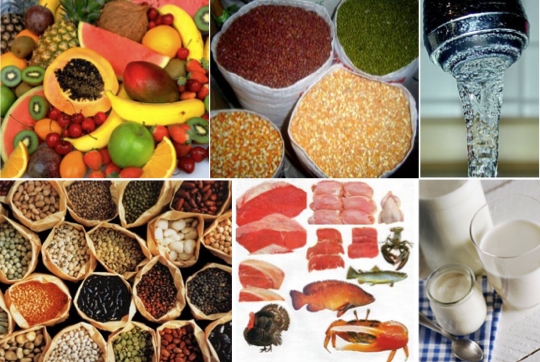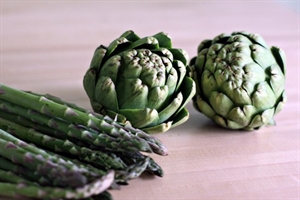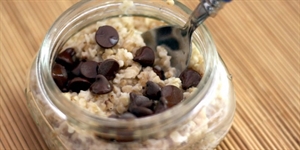Tubers and Dried Fruit Month on January, 2025: I need to lose 30 pounds before halloween.?
January, 2025 is Tubers and Dried Fruit Month 2025. 1 to 12 Month Food Supply Freeze Dried Emergency Meals 25 Yr Life - Free S&H - Free Bonus
As an Amazon Associate I earn from qualifying purchases.

Please follow the instructions bellow. Don't rush. Go slow. You your self has do decide the plan.
Calorie Reckoner
You can calculate your own calorie expenditure for a day.
For that you may refer the chart below. It can give rough idea.
The amount of energy depends on weight
Energy Expenditure Per hour during different activities and exercises
(Figures are for a person weighing 70 Kgs)
Activity Calories per hour
Sleeping 65
Awake, lying still 77
Sitting at rest 100
Standing relaxed 105
Dressing and undressing 118
Sewing (tailoring) 135
Typing rapidly 140
Light exercise 170
Walking slowly 200
Badminton 270
Dancing 273
Active exercise 290
Golf 333
Cycling 450
Walking briskly 450
Tennis 450
Horse riding 500
Swimming 500
Jogging 540
Football 540
Running 540
Severe exercise 600
Squash 630
Very severe exercise 650
Walking upstairs 1100
To reduce 1 Pound of fat burn 3500 calories or
To reduce 1 kilogram of fat burn 7500 calories
Set goal of reducing maximum 2 kilograms of weight per month.
Calorie Counter
Know the calorie contents of the food we eat.
When quantity is not specified, calories relate to 100 Gms.
Cereals and cereal products calories
Bread white (Slice 3.5” X 4” X0.4”) 60
Chapatti 1med (35 gms atta) 80
Cornflakes 1 cup (25gms) 95
Dosa plain (1med.9”dia,) 130
Idali (1med. 3.5” dia.) 100
Paratha. plain 275
Pop corn (50gms) 170
Rice cooked (3 table spoons. 60gms) 70
Pulsed and legumes calories
Bengal gram (Channa dal) 372
Black-gram (Urad dal) 347
Green gram (Moong) 334
Lentil (Masoor) 343
Rajmah 346
Soya bean 432
Dried Fruits Calories
Dates, Currants 317
Figs, dried 55
Raisins 315
Leafy vegetables Calories
Cabbage 45
Fenugreek leaves (Methi) 49
Lettuce 21
Mayalu 32
Spinach (Palak) 25
Other Vegetables Calories
Bitter Gourd (Karela) 25
Brinjal 24
Caposicurn (Simla mirch) 24
Cauliflower 30
Cucumber 13
Drum stick (Shevga) 26
French beans (Phali) 26
Lady finger 35
Mushroom 42
Peas (Mattar) 93
Plantain green (Kela) 64
Roots and Tubers Calories
Beetroot 43
Carrot 48
Onion 50
Potato 97
Sweet Potato 120
Fats and oils Calories
Butter 755
Ghee 900
Margarine 755
Oil (only vegetable oil) 900
Vanaspati 900
Condiments and spices Calories
Asafoedita (Hing) 297
Cardamum (Elaichi) 229
Clove dry (Lavang) 286
Coriander (Dhania) 288
Garlic dry (Lasoon) 145
Ginger fresh (Adrak) 67
Pepper dry (Kali meeri) 304
Turmeric (Haldi) 349
Fresh fruits Calories
Apple 56
Banana 153
Chiku 66
Mango 80
Musambi 43
Orange 53
Popaya 32
Pineapple 46
Seethaphal 104
Nuts Calories
Almonds (10gms) 65
Cashew nuts (10gms) 88
Coconut dry (Khopra) 662
Groundnuts (Shengadana) 560
Pistachia nuts (Pista) 626
Sugars Calories
Gur (joggery, 15gms) 57
Jam (1 tablespoon. 5gms) 20
Sugar (1 tablespoon. 5gms) 16
Soups Calories
Cream of Chikan (1 cup. 150ml) 86
Cream of spinach (1 cup. 200ml) 206
Cream of tomato (1 cup. 150 ml) 85
Vegetable (1 cup. 150 ml) 65
Milk and milk products Calories
Butter-milk, skimmed (1glass) 25
Cheese processed 348
Custard (baked) 114
Curds (cow’s milk) 60
Ice-cream 205
Kheer (payasam) 178
Milk buffalo’s (1 cup) 100
Paneer (10gms) 10
Biscuits and cakes calories
Biscuits (salted. 3gms) 15
Biscuits (sweet, 4gms) 24
Chocolate cake ( 45gms) 165
Fruit cake (30gms) 117
Sweets calories
Burfi (25gms) 100
Fruit jelly 75
Gulab jamun (25gms) 100
Jalebi 412
Rasgolla (30gms) 100
Snacks and savouries calories
Chakli ( wheat flour) 550
Chewra ( fried) 420
Dhokla 122
Kachori 166
Potato Vada 159
Samosa 156
Sev (50gms) 325
Tomato sandwich 182
Beverages, soft and alcoholic calories
Apple juice (200ml) 95
Beer (240ml) 112
Brandy (30ml) 73
Coffee (1oz. milk. no sugar) 25
Gin dry (43ml) 105
Rum, Whisky (43ml) 105
Tea (1oz. milk, no sugar) 22
Wine, sweet (100ml) 160
Fish and other sea food calories
Lobster 90
Pamfret 87
Prawn 89
Ravas 112
Sardines 80
Shrimp 349
Surmai 92
Meat products calories
Beaf (muscle) 114
Chicken (broiler) 151
Egg (1. 40 gms) 65
Ham cooked 305
Mutton (muscle) 194
Miscellaneous calories
Dal (cooked, thick consistency, 1/3 cup
113gms) 145
Papad (1, 3 ¼”diameter)
a) grilled 25
b) fried 43
Pickles (1 teaspoonful. 5gms) 38
Rasam (1cup) 12
Sambar (1/2 cup) 105
Tomato sauce (1 teaspoonfull, 10gms) 7
(Note: - Avoid non vegetarian food and alcoholic as well as soft drinks)
Follow following steps –
1. Bring a note book to keep calories account.
2. Note weight on first day.
3. Keep account of calories intake and burning for fifteen days.
4. Note down weight. According to weight gain or loss or steady state match the calories
balance accordingly by allotting some increments the activities and food intake.
5. Decide your goal of reduction of calories intake and increase in combustion of calories.
6. Keep track of daily activities and check after every month.
7. Be happy with the results.

How to reduce my weight ?
Please follow the instructions bellow. Don't rush. Go slow. You your self has do decide the plan.
Calorie Reckoner
You can calculate your own calorie expenditure for a day.
For that you may refer the chart below. It can give rough idea.
The amount of energy depends on weight
Energy Expenditure Per hour during different activities and exercises
(Figures are for a person weighing 70 Kgs)
Activity Calories per hour
Sleeping 65
Awake, lying still 77
Sitting at rest 100
Standing relaxed 105
Dressing and undressing 118
Sewing (tailoring) 135
Typing rapidly 140
Light exercise 170
Walking slowly 200
Badminton 270
Dancing 273
Active exercise 290
Golf 333
Cycling 450
Walking briskly 450
Tennis 450
Horse riding 500
Swimming 500
Jogging 540
Football 540
Running 540
Severe exercise 600
Squash 630
Very severe exercise 650
Walking upstairs 1100
To reduce 1 Pound of fat burn 3500 calories or
To reduce 1 kilogram of fat burn 7500 calories
Set goal of reducing maximum 2 kilograms of weight per month.
Calorie Counter
Know the calorie contents of the food we eat.
When quantity is not specified, calories relate to 100 Gms.
Cereals and cereal products calories
Bread white (Slice 3.5” X 4” X0.4”) 60
Chapatti 1med (35 gms atta) 80
Cornflakes 1 cup (25gms) 95
Dosa plain (1med.9”dia,) 130
Idali (1med. 3.5” dia.) 100
Paratha. plain 275
Pop corn (50gms) 170
Rice cooked (3 table spoons. 60gms) 70
Pulsed and legumes calories
Bengal gram (Channa dal) 372
Black-gram (Urad dal) 347
Green gram (Moong) 334
Lentil (Masoor) 343
Rajmah 346
Soya bean 432
Dried Fruits Calories
Dates, Currants 317
Figs, dried 55
Raisins 315
Leafy vegetables Calories
Cabbage 45
Fenugreek leaves (Methi) 49
Lettuce 21
Mayalu 32
Spinach (Palak) 25
Other Vegetables Calories
Bitter Gourd (Karela) 25
Brinjal 24
Caposicurn (Simla mirch) 24
Cauliflower 30
Cucumber 13
Drum stick (Shevga) 26
French beans (Phali) 26
Lady finger 35
Mushroom 42
Peas (Mattar) 93
Plantain green (Kela) 64
Roots and Tubers Calories
Beetroot 43
Carrot 48
Onion 50
Potato 97
Sweet Potato 120
Fats and oils Calories
Butter 755
Ghee 900
Margarine 755
Oil (only vegetable oil) 900
Vanaspati 900
Condiments and spices Calories
Asafoedita (Hing) 297
Cardamum (Elaichi) 229
Clove dry (Lavang) 286
Coriander (Dhania) 288
Garlic dry (Lasoon) 145
Ginger fresh (Adrak) 67
Pepper dry (Kali meeri) 304
Turmeric (Haldi) 349
Fresh fruits Calories
Apple 56
Banana 153
Chiku 66
Mango 80
Musambi 43
Orange 53
Popaya 32
Pineapple 46
Seethaphal 104
Nuts Calories
Almonds (10gms) 65
Cashew nuts (10gms) 88
Coconut dry (Khopra) 662
Groundnuts (Shengadana) 560
Pistachia nuts (Pista) 626
Sugars Calories
Gur (joggery, 15gms) 57
Jam (1 tablespoon. 5gms) 20
Sugar (1 tablespoon. 5gms) 16
Soups Calories
Cream of Chikan (1 cup. 150ml) 86
Cream of spinach (1 cup. 200ml) 206
Cream of tomato (1 cup. 150 ml) 85
Vegetable (1 cup. 150 ml) 65
Milk and milk products Calories
Butter-milk, skimmed (1glass) 25
Cheese processed 348
Custard (baked) 114
Curds (cow’s milk) 60
Ice-cream 205
Kheer (payasam) 178
Milk buffalo’s (1 cup) 100
Paneer (10gms) 10
Biscuits and cakes calories
Biscuits (salted. 3gms) 15
Biscuits (sweet, 4gms) 24
Chocolate cake ( 45gms) 165
Fruit cake (30gms) 117
Sweets calories
Burfi (25gms) 100
Fruit jelly 75
Gulab jamun (25gms) 100
Jalebi 412
Rasgolla (30gms) 100
Snacks and savouries calories
Chakli ( wheat flour) 550
Chewra ( fried) 420
Dhokla 122
Kachori 166
Potato Vada 159
Samosa 156
Sev (50gms) 325
Tomato sandwich 182
Beverages, soft and alcoholic calories
Apple juice (200ml) 95
Beer (240ml) 112
Brandy (30ml) 73
Coffee (1oz. milk. no sugar) 25
Gin dry (43ml) 105
Rum, Whisky (43ml) 105
Tea (1oz. milk, no sugar) 22
Wine, sweet (100ml) 160
Fish and other sea food calories
Lobster 90
Pamfret 87
Prawn 89
Ravas 112
Sardines 80
Shrimp 349
Surmai 92
Meat products calories
Beaf (muscle) 114
Chicken (broiler) 151
Egg (1. 40 gms) 65
Ham cooked 305
Mutton (muscle) 194
Miscellaneous calories
Dal (cooked, thick consistency, 1/3 cup
113gms) 145
Papad (1, 3 ¼”diameter)
a) grilled 25
b) fried 43
Pickles (1 teaspoonful. 5gms) 38
Rasam (1cup) 12
Sambar (1/2 cup) 105
Tomato sauce (1 teaspoonfull, 10gms) 7
(Note: - Avoid non vegetarian food and alcoholic as well as soft drinks)
Follow following steps –
1. Bring a note book to keep calories account.
2. Note weight on first day.
3. Keep account of calories intake and burning for fifteen days.
4. Note down weight. According to weight gain or loss or steady state match the calories
balance accordingly by allotting some increments the activities and food intake.
5. Decide your goal of reduction of calories intake and increase in combustion of calories.
6. Keep track of daily activities and check after every month.
7. Be happy with the results.

Is sweet potato starch the same as regular potato starch? (if it is, can you provide a site that proves it?)?
From the articles below, it shows that Sweet potato's starch is generally made up of between 80 to 90% carbohydrates of the dry weight of sweet potato roots and Potatoes grown for starch manufacture may contain as much as 22% starch dry matter. About 75 per cent of the dry weight is carbohydrate.
Sweet Potato, common name applied to a perennial, trailing herb of the bindweed family. The plant, which is native to tropical America, is cultivated on sandy or loamy soils throughout many warm regions of the world, and exists as an important food staple in a number of countries. It is planted primarily for its thick, edible roots, called sweet potatoes. The name is due to a sugar content. Two main types are commonly cultivated: a dry, mealy type, and a soft, light-to-deep-yellow, moist-fleshed type. The species often called wild sweet-potato vine, manroot, or man-of-the-earth is not edible, but is cultivated as an ornamental vine.
Carbohydrates generally make up between 80 to 90 % of the dry weight of sweet potato roots. The sweet potato yields an important starch, which is used as a food starch in noodles etc. and technically for sizing textiles and papers, for the manufacture of adhesives and in laundries. The process of extracting and refining the starch is similar to the potato starch process. The pink and yellow varieties are rich in carotene, the precursor of vitamin A.
Sweet potato starch granules vary from 4 to 40 microns with 19 micron in average. The amylose content is 19% - 25%.
Scientific classification: The sweet potato belongs to the family Convolvulaceae. It is classified as Ipomoea batatas. The species called wild sweet-potato vine, manroot, or man-of-the-earth is classified as Ipomoea pandurata.
China is the world's largest sweet potato producer, accounting for 80-85 percent of global production. The majority of China's sweet potato is grown in seasonal rotations with other staple crops and is used for animal feed or to produce noodles and industrial starch.
Sweet potatoes grow year-round in the tropics. Sweet potato has the shortest growing cycle of the root crops grown in the tropics. The crop is normally harvested about 4 months after planting and harvesting may be spread over several months. In a temperate climate harvest must take place before risk of frost.
Potato, edible starchy tuber. It is produced by certain plants of a genus of the nightshade family, especially the common white potato. The name is also applied to the plants themselves. The tuber of the white potato is a staple food in most countries of the temperate regions of the world. The plant is grown as an annual herb. The stem attains a length up to almost 1 m (3 ft), erect or prostrate, with pointed leaves and white to purple flowers. The fruit is a many-seeded berry about the size of a cherry. Like the stems and the foliage, the fruit contains significant amounts of solanin, a poisonous alkaloid characteristic of the genus. Three to six tubers form on the underground stem, although in some varieties there may be as many as 10 to 20. The tuber skin varies from brownish-white to purple. The plant, native to the Peruvian Andes, was probably first taken to Europe in the mid-16th century by Spanish explorers and was probably introduced to Britain by English explorers sailing from the New World only a few years later. The cultivation of the potato spread rapidly, especially in the temperate regions, and early in the 18th century the plant was introduced into North America. (Fig.1: Potato starch in polarized light)
In ordinary cultivation, propagation is accomplished by planting the tuber or a section of the tuber containing an eye, which is an undeveloped bud. New varieties are developed from seed produced after controlled pollination. Improved varieties may be propagated rapidly by using cuttings from the sprouts.
Storage. Potatoes require cold storage. 3-4 oC is the optimum storage temperature for seed potatoes. The low temperature prevents sprouting. After harvesting the potatoes are kept for two to three weeks at 15 oC ( a wound healing period) and first then, they are over a one month period gradually cooled down to their storage temperature and they will keep well for a year or so. In spring the seed potatoes are during minimum a fortnight gradually heated to 10 to 15 oC before planting. It may be done by shutting of the cooling system mid March and starting air heating early April for the potatoes to be ready for planting end of April. Potatoes for chips and other food products have to be stored at a higher temperature not below 6-7 oC. That temperature is to high to prevent sprouting and sprout depressing gas has to be used. At 8 oC and below sugars are formed - the colder the more - and the sugar forms a brown color by a Maillard reaction not acceptable in food products. The sugar formation is however not a quantity problem and does not affect starch yield from potatoes used for starch manufac


















